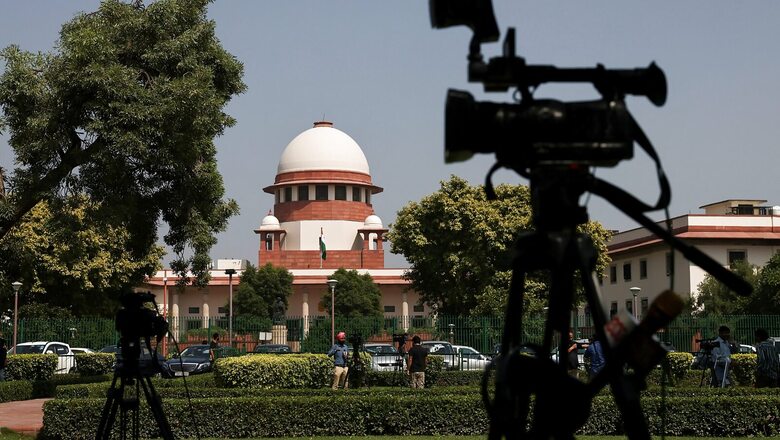
views
The recent judgment of the Supreme Court holding the demonetisation process lawful is a step in the right direction for several reasons, the most important one being the elaborate interpretation of separation of powers that it upholds.
While the Supreme Court pronounced a 4:1 majority judgment in favour of the central government, it is not surprising to find that the judgment authored by one dissenting judge out of five in the Constitution Bench is being accentuated more, like a soliloquy. As such, whether this is done to establish a narrative or not, remains debatable. It is also debatable whether projecting the dissent as the decision of the court is doing the intended narrative more harm than good.
Nonetheless, it is important to reflect on the intent of the highest court through the judgment. While many proponents of the separation of powers doctrine may argue that the courts should never have gone into this domain in the first place as the 2016 note ban was a policy decision of the government, the remarks of the top court are extremely relevant, reinforcing significant and well-outlined domains of our unique democracy.
The sovereignty of the people of India over and above all is depicted in the judgment, as the Constitution of India soulfully envisions, signifying that the popular will of the people is expressed through representatives in Parliament.
This remains important because the courts have consistently urged vested interest groups to steer away from approaching courts on a whim, merely because of a policy decision happens to be the call of the Centre – the broader ramifications of which remain unexplored but not unimagined.
The Supreme Court has specifically interpreted the Reserve Bank of India Act in a purposive manner, instead of handing out a strict interpretation to it, while holding that the Centre has power to demonetise “all” currency notes and then gone on to state that it has the power to recommend whether demonetisation should be effectuated or not to the central board.
Apart from the technicalities of law, it has found that there was nothing unlawful in the way the note ban was enforced.
More significantly, the top court has effectively steered away from deciding whether government should have or should have not enforced the note ban, primarily because it is beyond the scope of judicial review to decide on the domain of another.
With the highest court noted that the intention of the government cannot be questioned since it was done in good faith, considering the complexities around the issues that surmounted it, it may be appropriate to reflect on whether it could it be said that the Supreme Court’s view on the purpose of the note ban policy is an endorsement of it.
“By no stretch of imagination could it be said that the aforesaid three purposes, i.e., elimination of fake currency, black money and terror financing are not proper purposes…. We find that there is a reasonable nexus between the measure of demonetization with the aforesaid purposes of addressing issues of fake currency bank notes, black money, drug trafficking & terror financing,” the court said.
In fact, in her dissenting view as well, Justice BV Nagarathna has relied on a number of precedents to state that the examination of the process of demonetisation is within the lakshman rekha of the courts and constitutional courts should refrain from interfering in financial and economic policy decisions of the government, “unless it is so irrational that it warrants interference”.
Even if the decision is looked at from a 4:1 lens and more heed is paid to Justice Nagarathna’s view, it becomes substantially clear that the Supreme Court has spoken in unison for separation of powers and non-interference by courts in a policy decision which was not irrational.
With that, Justice Nagarathna’s dissent may have endorsed the 2016 policy decision of the government as in her own words, she states it was one which demonstrates “foresight” and was reflective of the concern for economic health and security of the country.
She has gone on to state that the initiative of the Centre was targeted to address disparate evils which plague the nation’s economy and that it is “beyond the pale of doubt” that the measure was well-intentioned, aimed at eliminating depraved practices hoarding “black” money, counterfeiting, which in turn enable even greater evils, including terror funding, drug trafficking, emergence of a parallel economy, money laundering including havala transactions.
It may, thus, be worth more than two cents to ponder upon, whether the intention of painting the dissent as the voice of the Supreme Court is misplaced, for all soliloquy’s are not acted out in Shakespeare’s hamlet.
Sanya Talwar is Editor, Lawbeat. The views expressed in this article are those of the author and do not represent the stand of this publication.
Read all the Latest Opinions here




















Comments
0 comment